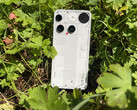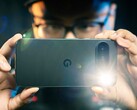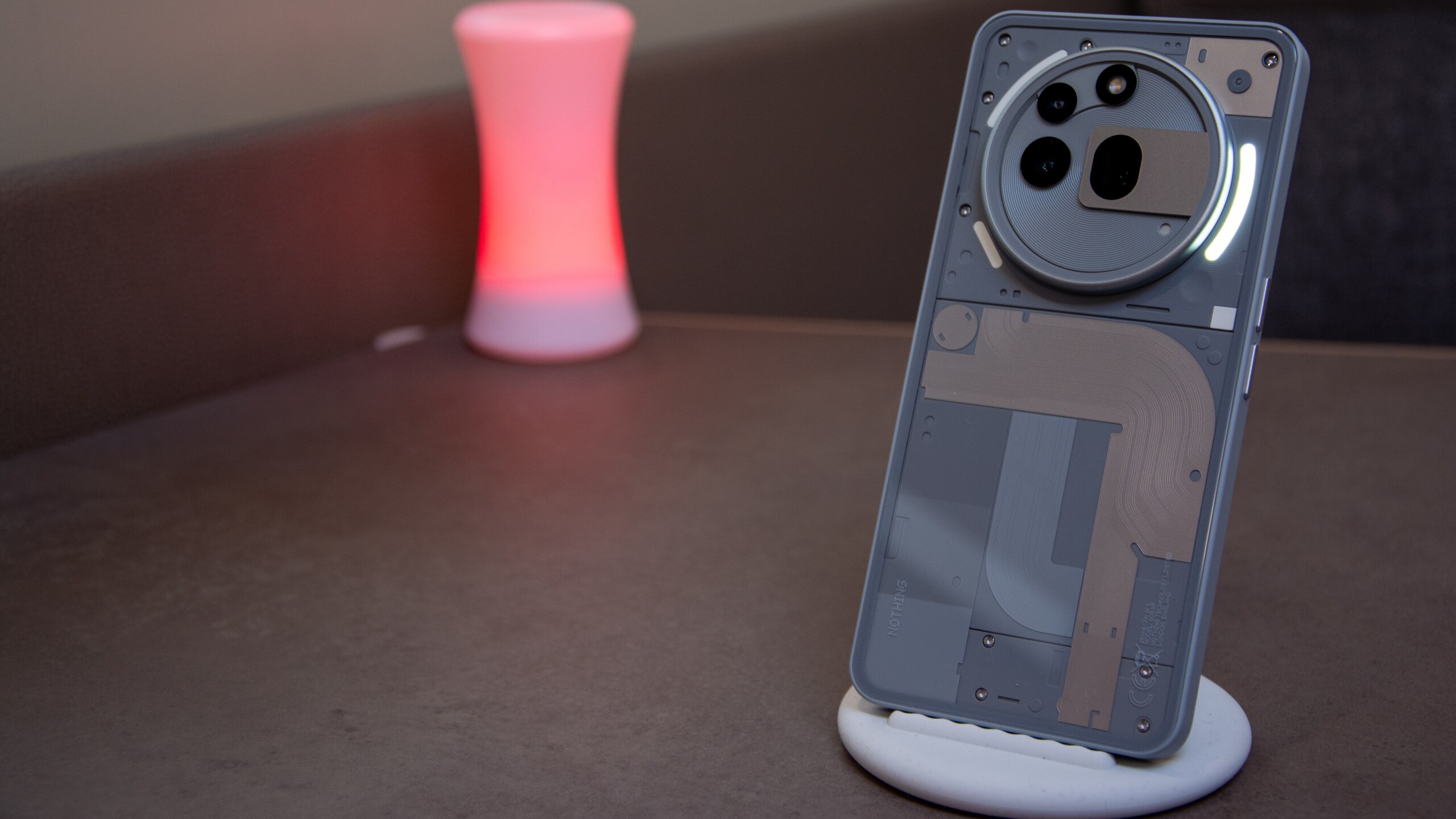
More megapixels - Nothing Phone (3a) Pro smartphone review
Pro Glyph.
Nothing has released a Phone (3a) Pro. Above all, it should feature a better camera—plus, it supports eSIMs. Visually, you can clearly tell it's a Nothing phone by its back cover. Both 3a smartphones share a processor, display and battery. Our review will clarify what sets the Pro apart.Benedikt Winkel, 👁 Daniel Schmidt (translated by Daisy Dickson) Published 🇩🇪 🇫🇷 ...
Verdict - The Phone (3a) Pro dares to use better cameras
Nothing has given its Phone (3a) series a Pro model. Visually, this can be clearly seen when you take a look at its cameras. And this is where the differences lie. Although it features the same number of lenses, the 3a Pro has more megapixels. We like photos taken with its periscope lens in particular.
The second plus point is its eSIM support. If this is important to you, then you'll need to go for the Pro. And that's the end of this model's minor differences. Nothing charges $150 more for the Pro version.
Both models have a great bright display, a unique design as well as high operating speeds. All-in-all, the Nothing Phone 3a Pro offers a comprehensive total package without any real weaknesses.
Pros
Cons
Price and availability
The Nothing Phone (3a) Pro currently retails for $459. You can purchase it directly from the manufacturer.
Table of Contents
- Verdict - The Phone (3a) Pro dares to use better cameras
- Specifications
- Case - The Phone (3a) Pro with a glass back
- Connectivity - Only USB 2.0 in the 3a Pro
- Software - 6 years of security patches and Essential Space
- Communication and GNSS - The 3a Pro without the 6-GHz band
- Telephone functions and call quality - The Nothing 3a Pro sounds good
- Cameras - Three times 50 MPix in the 3a Pro
- Accessories and warranty - Nothing includes a screen protector
- Input devices and operation - Loud vibration motor in the 3a Pro
- Display - The AMOLED panel in the 3a Pro gets bright and has a high sampling rate
- Performance - The Phone 3a Pro is class-average
- Emissions - Loud stereo sound on the 3a Pro
- Battery life - The (3a) Pro is a long-distance runner
- Notebookcheck total rating
- Possible alternatives compared
The differences between the Phone (3a) and the (3a) Pro are minor: The Pro model has a different camera setup as well as eSIM support.
Last year, Nothing released the (2a) and the (2a) Plus—but not a Pro model. You can get the 3a Pro in one configuration with 12 GB RAM and 256 GB storage. There are two colorways available: gray and black.
Specifications
Case - The Phone (3a) Pro with a glass back
Nothing has updated its A-series, giving it a glass back that feels more like plastic. The transparent back and the built-in Glyphs (LEDs) create the typical Nothing look. Visually, the phone's camera island is very different from that of the normal phone (3a) and protrudes quite far from the device.
The device's frame is made of aluminum and has a matte finish. The four buttons in its case are distributed on both sides and fit nicely. Overall, the phone's build quality is impressive, although it creaks slightly when you try to bend it with force.
The Phone (3a) Pro has an IP64 certification and a special key that can be freely assigned—Nothing calls this the "Essential Key". Its display is protected by Panda Glass.
Connectivity - Only USB 2.0 in the 3a Pro
Nothing has installed a USB-C port in the 3a Pro, which only supports USB 2.0. It supports exFAT and NTFS as file systems for external data carriers. During our test, the (3a) Pro achieved a transfer rate of 27.72 MB/s in combination with a Samsung PSSD T7.
NFC is on board, but buyers will have to do without storage expansion, a jack connection and an infrared sensor.
Software - 6 years of security patches and Essential Space
The Phone (3a) Pro comes delivered with Android 15 and NothingOS 3.1. The device received several updates during the test period—at the time of testing, the latest security patch was dated February 2025. According to the manufacturer, the Phone (3a) Pro will be supplied with software updates for 3 years and security updates for 6 years.
Thankfully, no bloatware is installed. The software doesn't differ much from stock Android, but Nothing offers a very unique look with its own fonts and elements. You can activate the classic Android design if desired.
One special feature is the so-called "Essential Space". This is supposedly a hub for memories, consisting of pictures, screenshots or audio recordings. You can save media there using the "Essential Key". Image recognition provides descriptions of the content.
Sustainability - Lots of recycling at Nothing
The Nothing Phone (3a) Pro's CO2 footprint is indicated on its packaging: 51.3 kilograms. The manufacturer states that the central frame is made from 100% recycled aluminum. The tin used on the boards is also said to be fully recycled, as well as 85% of the steel parts used. According to Nothing, energy from renewable sources is used during the phone's production.
Its packaging is completely plastic-free. The installed battery is said to still have a capacity of 90 percent after 1200 charging cycles.
Communication and GNSS - The 3a Pro without the 6-GHz band
The Nothing Phone 3a Pro supports WiFi 6, but not within the 6 GHz band. Its transmission rates were impressive during our test in combination with our reference router, the Asus ROG Rapture GT-AXE11000.
The Phone (3a) Pro is 5G-ready. Its reception was fine in our test. The device supports a large number of bands, so reliable reception in Europe, where this test was carried out, should not be a problem.
The 3a Pro supports all common satellite systems in single-band mode. Establishing a connection took a few seconds during our test. In addition, its positioning wasn't particularly accurate. During everyday use, navigation software—such as Google Maps—can be used without any issues.
Telephone functions and call quality - The Nothing 3a Pro sounds good
Nothing relies on Google's phone app, and its operation isn't a mystery. The phone's call quality is impressive. The earpiece and loudspeaker can get super loud if required. The other person's voice sounded clear during our test.
3a Pro users can also be understood clearly with no audible background noise.
Cameras - Three times 50 MPix in the 3a Pro
Nothing has installed three lenses into the back of the Phone (3a) Pro. The main, periscope and selfie cameras all have a 50-MPix resolution. The zoom and front camera are an upgrade compared to the normal (3a).
Pictures taken on the 3a Pro show great dynamics, and colors appear vivid. However, we noted a lack of sharpness. The (3a) Pro copes well with shots taken in low-light conditions, but the subjects then look quite washed out. We like its 3x zoom, optical image stabilization and speedy autofocus.
The (3a) Pro features a manual mode with lots of setting options, as well as a night mode and a macro mode that delivers detailed images. Portrait mode offers four different focal lengths.
Videos can be recorded with all lenses at a maximum of 4K and 30 fps. 60 fps is only possible when recording at 1080p. The zoom lens' video quality clearly lags behind the main lens. Overall, the phone's video quality is good and the stabilization works reliably.
Image comparison
Choose a scene and navigate within the first image. One click changes the position on touchscreens. One click on the zoomed-in image opens the original in a new window. The first image shows the scaled photograph of the test device.
RabbitPondUltra-wide angle5x zoomLow-light


Accessories and warranty - Nothing includes a screen protector
The Phone (3a) Pro doesn't come with much. In its packaging, there is only a SIM tool and a USB-C to USB-C cable. A screen protector is installed ex works. In the United States, the Nothing phone is covered by a standard 12-month warranty.
Input devices and operation - Loud vibration motor in the 3a Pro
Straight out of the box, the Nothing phone uses Google's Gboard keyboard. Inputs are reliably recognized right into the edges of the display. It feels nice and smooth despite the applied screen protector. The film didn't peel off during the test period and has no annoying edges.
The device's built-in linear vibration motor provides crisp feedback, although it's clearly audible. The Phone 3a Pro can be unlocked using 2D facial recognition or an optical fingerprint reader in its display.
Display - The AMOLED panel in the 3a Pro gets bright and has a high sampling rate
Nothing has equipped its phone with a 6.77-inch AMOLED panel. We measured a maximum brightness of 1412 cd/m² with the ambient light sensor activated during our APL18 test. When displaying HDR content, the screen reached 1347 nits; without the ambient light sensor, we noted 768 cd/m².
During our test, we measured screen flickering with two different amplitudes. In addition to a basic frequency of 90 Hz, we noted a secondary, high-frequency flickering at 740 Hz. Using PWM dimming mode, the 3a Pro should reach up to 2160 Hz.
According to DRM-Info, its refresh rate has steps at 30, 60, 90 and 120 Hz; the software adjusts the screen's rate adaptively by default. According to the manufacturer, its sampling rate should be 480 Hz, and even 1000 Hz when using gaming mode.
| |||||||||||||||||||||||||
Brightness Distribution: 98 %
Center on Battery: 1218 cd/m²
Contrast: ∞:1 (Black: 0 cd/m²)
ΔE ColorChecker Calman: 1.5 | ∀{0.5-29.43 Ø4.78}
ΔE Greyscale Calman: 2.3 | ∀{0.09-98 Ø5}
98.2% sRGB (Calman 2D)
Gamma: 2.26
CCT: 6819 K
| Nothing Phone (3a) Pro AMOLED, 2392x1080, 6.8" | Xiaomi Redmi Note 14 Pro+ 5G AMOLED, 2712x1220, 6.7" | Samsung Galaxy A55 5G Super AMOLED, 2340x1080, 6.6" | Google Pixel 8a AMOLED, 2400x1080, 6.1" | |
|---|---|---|---|---|
| Screen | 9% | -2% | 6% | |
| Brightness middle (cd/m²) | 1318 | 1210 -8% | 962 -27% | 1518 15% |
| Brightness (cd/m²) | 1306 | 1222 -6% | 967 -26% | 1466 12% |
| Brightness Distribution (%) | 98 | 92 -6% | 99 1% | 88 -10% |
| Black Level * (cd/m²) | ||||
| Colorchecker dE 2000 * | 1.5 | 1 33% | 1.6 -7% | 1.2 20% |
| Colorchecker dE 2000 max. * | 2.9 | 2.7 7% | 2.6 10% | 3.3 -14% |
| Greyscale dE 2000 * | 2.3 | 1.5 35% | 1.5 35% | 2 13% |
| Gamma | 2.26 97% | 2.25 98% | 2.13 103% | 2.2 100% |
| CCT | 6819 95% | 6509 100% | 6382 102% | 6786 96% |
* ... smaller is better
Screen Flickering / PWM (Pulse-Width Modulation)
| Screen flickering / PWM detected | 90 Hz Amplitude: 13.25 % Secondary Frequency: 740 Hz | ||
The display backlight flickers at 90 Hz (worst case, e.g., utilizing PWM) . The frequency of 90 Hz is very low, so the flickering may cause eyestrain and headaches after extended use. In comparison: 53 % of all tested devices do not use PWM to dim the display. If PWM was detected, an average of 8111 (minimum: 5 - maximum: 343500) Hz was measured. | |||
Measurement series with fixed zoom level and different brightness settings (The amplitude curve at minimum brightness looks flat, but this is due to the scaling. The info box shows the enlarged version of the amplitude at minimum brightness).
The Phone 3a Pro achieved class-average results when it came to color accuracy. Its panel showed the greatest deviations in grayscale. According to our Calman 2D measurement, it covers the sRGB color space by 98.2%.
Display Response Times
| ↔ Response Time Black to White | ||
|---|---|---|
| 1.23 ms ... rise ↗ and fall ↘ combined | ↗ 0.575 ms rise | |
| ↘ 0.654 ms fall | ||
| The screen shows very fast response rates in our tests and should be very well suited for fast-paced gaming. In comparison, all tested devices range from 0.1 (minimum) to 240 (maximum) ms. » 5 % of all devices are better. This means that the measured response time is better than the average of all tested devices (20.2 ms). | ||
| ↔ Response Time 50% Grey to 80% Grey | ||
| 0.66 ms ... rise ↗ and fall ↘ combined | ↗ 0.3185 ms rise | |
| ↘ 0.3365 ms fall | ||
| The screen shows very fast response rates in our tests and should be very well suited for fast-paced gaming. In comparison, all tested devices range from 0.165 (minimum) to 636 (maximum) ms. » 1 % of all devices are better. This means that the measured response time is better than the average of all tested devices (31.6 ms). | ||
Performance - The Phone 3a Pro is class-average
The Snapdragon 7S Gen 3 SoC is used in the Phone (3a) Pro. The smartphone's performance is average for its class. Only the Google Pixel 8a with its Tensor G3 was significantly better in almost all benchmarks.
| UL Procyon AI Inference for Android - Overall Score NNAPI | |
| Google Pixel 8a | |
| Average of class Smartphone (3769 - 81594, n=139, last 2 years) | |
| Nothing Phone (3a) Pro | |
| Average Qualcomm Snapdragon 7s Gen 3 (8460 - 8857, n=5) | |
| Xiaomi Redmi Note 14 Pro+ 5G | |
| Samsung Galaxy A55 5G | |
| Geekbench AI | |
| Single Precision TensorFlow NNAPI 1.1 | |
| Average of class Smartphone (122 - 4122, n=40, last 2 years) | |
| Xiaomi Redmi Note 14 Pro+ 5G | |
| Average Qualcomm Snapdragon 7s Gen 3 (n=1) | |
| Samsung Galaxy A55 5G | |
| Half Precision TensorFlow NNAPI 1.1 | |
| Average of class Smartphone (122 - 32120, n=40, last 2 years) | |
| Xiaomi Redmi Note 14 Pro+ 5G | |
| Average Qualcomm Snapdragon 7s Gen 3 (n=1) | |
| Samsung Galaxy A55 5G | |
| Quantized TensorFlow NNAPI 1.1 | |
| Average of class Smartphone (118 - 44381, n=40, last 2 years) | |
| Xiaomi Redmi Note 14 Pro+ 5G | |
| Average Qualcomm Snapdragon 7s Gen 3 (n=1) | |
| Samsung Galaxy A55 5G | |
The Nothing phone uses the Adreno 810 as a graphics unit. The benchmark results revealed the same result as for the CPU performance. The field was closer together in the browser benchmarks. The installed storage's write speed was great, while the Pixel 8a and Samsung Galaxy A55 were significantly better when it came to their read speeds.
The Phone 3a Pro's performance is sufficient to play PUBG Mobile smoothly using the Ultra HDR and Extreme frame rate settings.
GFXBench (DX / GLBenchmark) 2.7: T-Rex Onscreen | 1920x1080 T-Rex Offscreen
GFXBench 3.0: on screen Manhattan Onscreen OGL | 1920x1080 1080p Manhattan Offscreen
GFXBench 3.1: on screen Manhattan ES 3.1 Onscreen | 1920x1080 Manhattan ES 3.1 Offscreen
GFXBench: on screen Car Chase Onscreen | 1920x1080 Car Chase Offscreen | on screen Aztec Ruins High Tier Onscreen | 2560x1440 Aztec Ruins High Tier Offscreen | on screen Aztec Ruins Normal Tier Onscreen | 1920x1080 Aztec Ruins Normal Tier Offscreen | 3840x2160 4K Aztec Ruins High Tier Offscreen
| 3DMark / Wild Life Extreme Unlimited | |
| Google Pixel 8a | |
| Nothing Phone (3a) Pro | |
| Xiaomi Redmi Note 14 Pro+ 5G | |
| Samsung Galaxy A55 5G | |
| 3DMark / Wild Life Extreme | |
| Google Pixel 8a | |
| Nothing Phone (3a) Pro | |
| Xiaomi Redmi Note 14 Pro+ 5G | |
| Samsung Galaxy A55 5G | |
| 3DMark / Wild Life Unlimited Score | |
| Google Pixel 8a | |
| Nothing Phone (3a) Pro | |
| Xiaomi Redmi Note 14 Pro+ 5G | |
| Samsung Galaxy A55 5G | |
| 3DMark / Wild Life Score | |
| Google Pixel 8a | |
| Xiaomi Redmi Note 14 Pro+ 5G | |
| Nothing Phone (3a) Pro | |
| Samsung Galaxy A55 5G | |
| 3DMark / Solar Bay Score | |
| Xiaomi Redmi Note 14 Pro+ 5G | |
| 3DMark / Solar Bay Unlimited Score | |
| Xiaomi Redmi Note 14 Pro+ 5G | |
| 3DMark / Steel Nomad Light Unlimited Score | |
| Google Pixel 8a | |
| Nothing Phone (3a) Pro | |
| Xiaomi Redmi Note 14 Pro+ 5G | |
| 3DMark / Steel Nomad Light Score | |
| Google Pixel 8a | |
| Nothing Phone (3a) Pro | |
| Xiaomi Redmi Note 14 Pro+ 5G | |
| 3DMark / Sling Shot Extreme (ES 3.1) Unlimited Physics | |
| Samsung Galaxy A55 5G | |
| Nothing Phone (3a) Pro | |
| Nothing Phone (3a) Pro | |
| Xiaomi Redmi Note 14 Pro+ 5G | |
| Google Pixel 8a | |
| 3DMark / Sling Shot Extreme (ES 3.1) Unlimited Graphics | |
| Google Pixel 8a | |
| Samsung Galaxy A55 5G | |
| Xiaomi Redmi Note 14 Pro+ 5G | |
| Nothing Phone (3a) Pro | |
| Nothing Phone (3a) Pro | |
| 3DMark / Sling Shot Extreme (ES 3.1) Unlimited | |
| Google Pixel 8a | |
| Samsung Galaxy A55 5G | |
| Xiaomi Redmi Note 14 Pro+ 5G | |
| Nothing Phone (3a) Pro | |
| Nothing Phone (3a) Pro | |
| GFXBench (DX / GLBenchmark) 2.7 / T-Rex Onscreen | |
| Google Pixel 8a | |
| Samsung Galaxy A55 5G | |
| Xiaomi Redmi Note 14 Pro+ 5G | |
| Nothing Phone (3a) Pro | |
| GFXBench (DX / GLBenchmark) 2.7 / T-Rex Offscreen | |
| Google Pixel 8a | |
| Samsung Galaxy A55 5G | |
| Xiaomi Redmi Note 14 Pro+ 5G | |
| Nothing Phone (3a) Pro | |
| GFXBench 3.0 / Manhattan Onscreen OGL | |
| Google Pixel 8a | |
| Samsung Galaxy A55 5G | |
| Nothing Phone (3a) Pro | |
| Xiaomi Redmi Note 14 Pro+ 5G | |
| GFXBench 3.0 / 1080p Manhattan Offscreen | |
| Google Pixel 8a | |
| Samsung Galaxy A55 5G | |
| Nothing Phone (3a) Pro | |
| Xiaomi Redmi Note 14 Pro+ 5G | |
| GFXBench 3.1 / Manhattan ES 3.1 Onscreen | |
| Google Pixel 8a | |
| Samsung Galaxy A55 5G | |
| Nothing Phone (3a) Pro | |
| Xiaomi Redmi Note 14 Pro+ 5G | |
| GFXBench 3.1 / Manhattan ES 3.1 Offscreen | |
| Google Pixel 8a | |
| Samsung Galaxy A55 5G | |
| Nothing Phone (3a) Pro | |
| Xiaomi Redmi Note 14 Pro+ 5G | |
| GFXBench / Car Chase Onscreen | |
| Google Pixel 8a | |
| Samsung Galaxy A55 5G | |
| Nothing Phone (3a) Pro | |
| Xiaomi Redmi Note 14 Pro+ 5G | |
| GFXBench / Car Chase Offscreen | |
| Google Pixel 8a | |
| Samsung Galaxy A55 5G | |
| Nothing Phone (3a) Pro | |
| Xiaomi Redmi Note 14 Pro+ 5G | |
| GFXBench / Aztec Ruins High Tier Onscreen | |
| Google Pixel 8a | |
| Nothing Phone (3a) Pro | |
| Samsung Galaxy A55 5G | |
| Xiaomi Redmi Note 14 Pro+ 5G | |
| GFXBench / Aztec Ruins High Tier Offscreen | |
| Google Pixel 8a | |
| Xiaomi Redmi Note 14 Pro+ 5G | |
| Nothing Phone (3a) Pro | |
| Samsung Galaxy A55 5G | |
| GFXBench / Aztec Ruins Normal Tier Onscreen | |
| Google Pixel 8a | |
| Nothing Phone (3a) Pro | |
| Samsung Galaxy A55 5G | |
| Xiaomi Redmi Note 14 Pro+ 5G | |
| GFXBench / Aztec Ruins Normal Tier Offscreen | |
| Google Pixel 8a | |
| Xiaomi Redmi Note 14 Pro+ 5G | |
| Nothing Phone (3a) Pro | |
| Samsung Galaxy A55 5G | |
| GFXBench / 4K Aztec Ruins High Tier Offscreen | |
| Google Pixel 8a | |
| Xiaomi Redmi Note 14 Pro+ 5G | |
| Nothing Phone (3a) Pro | |
| Samsung Galaxy A55 5G | |
| Jetstream 2 - 2.0 Total Score | |
| Average of class Smartphone (23.8 - 387, n=152, last 2 years) | |
| Average Qualcomm Snapdragon 7s Gen 3 (118 - 161.6, n=4) | |
| Nothing Phone (3a) Pro (chrome 134) | |
| Samsung Galaxy A55 5G (Chrome 123) | |
| Xiaomi Redmi Note 14 Pro+ 5G (Chrome 132) | |
| Google Pixel 8a (Chrome 126) | |
| Speedometer 2.0 - Result 2.0 | |
| Average of class Smartphone (15.2 - 643, n=126, last 2 years) | |
| Nothing Phone (3a) Pro (chrome 135) | |
| Average Qualcomm Snapdragon 7s Gen 3 (144 - 176, n=3) | |
| Google Pixel 8a (Chrome 126) | |
| Xiaomi Redmi Note 14 Pro+ 5G (Chrome 132) | |
| Samsung Galaxy A55 5G (Chrome 123) | |
| Speedometer 3 - Score 3.0 | |
| Average of class Smartphone (1.03 - 42.8, n=126, last 2 years) | |
| Google Pixel 8a (Chrome 126) | |
| Nothing Phone (3a) Pro (chrome 135) | |
| Average Qualcomm Snapdragon 7s Gen 3 (8.58 - 11.2, n=3) | |
| Xiaomi Redmi Note 14 Pro+ 5G (Chrome 132) | |
| Samsung Galaxy A55 5G (Chrome 123) | |
| WebXPRT 4 - Overall | |
| Average of class Smartphone (27 - 306, n=148, last 2 years) | |
| Average Qualcomm Snapdragon 7s Gen 3 (110 - 149, n=5) | |
| Samsung Galaxy A55 5G (Chrome 123) | |
| Nothing Phone (3a) Pro (chrome 134) | |
| Xiaomi Redmi Note 14 Pro+ 5G (Chrome 132) | |
| Google Pixel 8a (Chrome 126) | |
| Octane V2 - Total Score | |
| Average of class Smartphone (2228 - 121337, n=200, last 2 years) | |
| Google Pixel 8a (Chrome 126) | |
| Nothing Phone (3a) Pro (chrome 134) | |
| Average Qualcomm Snapdragon 7s Gen 3 (37338 - 45346, n=6) | |
| Samsung Galaxy A55 5G (Chrome 123) | |
| Xiaomi Redmi Note 14 Pro+ 5G (Chrome 132) | |
| Mozilla Kraken 1.1 - Total | |
| Average of class Smartphone (257 - 28190, n=155, last 2 years) | |
| Xiaomi Redmi Note 14 Pro+ 5G (Chrome 132) | |
| Samsung Galaxy A55 5G (Chrome 123) | |
| Average Qualcomm Snapdragon 7s Gen 3 (862 - 1044, n=5) | |
| Google Pixel 8a (Chrome 126) | |
| Nothing Phone (3a) Pro (chrome 134) | |
* ... smaller is better
| Nothing Phone (3a) Pro | Xiaomi Redmi Note 14 Pro+ 5G | Samsung Galaxy A55 5G | Google Pixel 8a | Global Average -3 | Average of class Smartphone | ||
|---|---|---|---|---|---|---|---|
| AndroBench 3-5 | -19% | 9% | -19% | -47% | 60% | ||
| Sequential Read 256KB (MB/s) | 996.23 | 992.72 0% | 1688.53 69% | 1509.65 52% | 770 ? -23% | 2222 ? 123% | |
| Sequential Write 256KB (MB/s) | 970.63 | 931.68 -4% | 831.44 -14% | 255.31 -74% | 493 ? -49% | 1841 ? 90% | |
| Random Read 4KB (MB/s) | 255.89 | 171.2 -33% | 351.47 37% | 165.98 -35% | 122.1 ? -52% | 294 ? 15% | |
| Random Write 4KB (MB/s) | 304.95 | 186.14 -39% | 132.11 -57% | 243.82 -20% | 115.4 ? -62% | 334 ? 10% |
Emissions - Loud stereo sound on the 3a Pro
Temperature - The Phone 3a Pro only gets hot under extreme conditions
Under extreme load—we used the Burnout benchmark—the Nothing Phone (3a) Pro gets noticeably warm. We measured a maximum of 43.3 degrees Celsius on the front. During everyday use, however, the device stays nice and cool. Furthermore, we didn't notice any problems with heat development when playing games or watching movies.
(±) The maximum temperature on the upper side is 43.3 °C / 110 F, compared to the average of 35.2 °C / 95 F, ranging from 21.9 to 247 °C for the class Smartphone.
(+) The bottom heats up to a maximum of 39.7 °C / 103 F, compared to the average of 34 °C / 93 F
(+) In idle usage, the average temperature for the upper side is 27.4 °C / 81 F, compared to the device average of 32.9 °C / 91 F.
3DMark Steel Nomad stress test
| 3DMark | |
| Wild Life Stress Test Stability | |
| Samsung Galaxy A55 5G | |
| Nothing Phone (3a) Pro | |
| Xiaomi Redmi Note 14 Pro+ 5G | |
| Google Pixel 8a | |
| Wild Life Extreme Stress Test | |
| Nothing Phone (3a) Pro | |
| Samsung Galaxy A55 5G | |
| Xiaomi Redmi Note 14 Pro+ 5G | |
| Google Pixel 8a | |
| Steel Nomad Light Stress Test Stability | |
| Nothing Phone (3a) Pro | |
| Xiaomi Redmi Note 14 Pro+ 5G | |
| Google Pixel 8a | |
Speakers - Vibrations only in the Nothing phone's frame
The Nothing Phone (3a) Pro features stereo speakers. The phone's sound is good—the mids and especially the highs are very linear. The speakers don't distort the sound even at high volumes. The smartphone gets nice and loud and there are no vibrations on the back, only slight vibrations in the frame at full volume.
Nothing Phone (3a) Pro audio analysis
(+) | speakers can play relatively loud (89.9 dB)
Bass 100 - 315 Hz
(-) | nearly no bass - on average 22.4% lower than median
(±) | linearity of bass is average (9.8% delta to prev. frequency)
Mids 400 - 2000 Hz
(+) | balanced mids - only 3.8% away from median
(+) | mids are linear (3.9% delta to prev. frequency)
Highs 2 - 16 kHz
(±) | higher highs - on average 6.4% higher than median
(+) | highs are linear (0.9% delta to prev. frequency)
Overall 100 - 16.000 Hz
(±) | linearity of overall sound is average (16.5% difference to median)
Compared to same class
» 7% of all tested devices in this class were better, 5% similar, 88% worse
» The best had a delta of 11%, average was 35%, worst was 134%
Compared to all devices tested
» 27% of all tested devices were better, 6% similar, 67% worse
» The best had a delta of 4%, average was 24%, worst was 134%
Samsung Galaxy A55 5G audio analysis
(+) | speakers can play relatively loud (91.4 dB)
Bass 100 - 315 Hz
(-) | nearly no bass - on average 22.4% lower than median
(+) | bass is linear (6.2% delta to prev. frequency)
Mids 400 - 2000 Hz
(±) | reduced mids - on average 6.5% lower than median
(+) | mids are linear (5% delta to prev. frequency)
Highs 2 - 16 kHz
(±) | higher highs - on average 5.4% higher than median
(+) | highs are linear (3% delta to prev. frequency)
Overall 100 - 16.000 Hz
(±) | linearity of overall sound is average (17.6% difference to median)
Compared to same class
» 13% of all tested devices in this class were better, 8% similar, 79% worse
» The best had a delta of 11%, average was 35%, worst was 134%
Compared to all devices tested
» 34% of all tested devices were better, 8% similar, 58% worse
» The best had a delta of 4%, average was 24%, worst was 134%
Battery life - The (3a) Pro is a long-distance runner
Power consumption - The 3a Pro is frugal
Within the class, the Phone (3a) Pro performed well with regard to its power consumption. When it came to minimum consumption, the field was close together. Under load, however, the Nothing smartphone proved to be significantly more frugal than the comparison devices. The difference was particularly notable compared to the Xiaomi Redmi Note 14 Pro+ 5G equipped with the same SoC.
| Off / Standby | |
| Idle | |
| Load |
|
Key:
min: | |
| Nothing Phone (3a) Pro 5000 mAh | Xiaomi Redmi Note 14 Pro+ 5G 5110 mAh | Samsung Galaxy A55 5G 5000 mAh | Google Pixel 8a 4492 mAh | Average Qualcomm Snapdragon 7s Gen 3 | Average of class Smartphone | |
|---|---|---|---|---|---|---|
| Power Consumption | -17% | -47% | -61% | -42% | -55% | |
| Idle Minimum * (Watt) | 0.89 | 1.07 -20% | 0.85 4% | 0.92 -3% | 1.293 ? -45% | 0.848 ? 5% |
| Idle Average * (Watt) | 1.3 | 1.26 3% | 1.51 -16% | 1.46 -12% | 1.695 ? -30% | 1.434 ? -10% |
| Idle Maximum * (Watt) | 1.33 | 1.28 4% | 1.71 -29% | 1.65 -24% | 1.848 ? -39% | 1.618 ? -22% |
| Load Average * (Watt) | 3.29 | 3.7 -12% | 4.87 -48% | 7.96 -142% | 4.46 ? -36% | 7.01 ? -113% |
| Load Maximum * (Watt) | 4.76 | 7.52 -58% | 11.73 -146% | 10.74 -126% | 7.73 ? -62% | 11.3 ? -137% |
* ... smaller is better
Power consumption: Geekbench (150 cd/m²)
Power consumption: GFXbench (150 cd/m²)
Runtimes - No wireless charging on the 3a Pro
The device's low power consumption pays off when it comes to its runtimes. The Nothing Phone (3a) Pro lasted almost 20 hours in our realistic WiFi web surfing test. As a result, the 3a managed to beat the comparison devices, although the Redmi Note 14 Pro+, for example, features a larger battery.
During everyday use, the (3a) Pro can last for two days if you don't put it under a lot of strain. Nothing promises fast charging at a maximum of 50 watts and a full charge in under an hour. We were unable to achieve this during our test without the Nothing charger.
With an Anker 335 charger, the 3a Pro was 80 percent charged after 60 minutes. We needed just under 90 minutes for a full charge. The 3a Pro doesn't support wireless charging.
| Battery runtime - WiFi v1.3 | |
| Nothing Phone (3a) Pro | |
| Xiaomi Redmi Note 14 Pro+ 5G | |
| Samsung Galaxy A55 5G | |
| Google Pixel 8a | |
Notebookcheck total rating
The Phone (3a) Pro is clearly recognizable as a Nothing smartphone. Its look is striking, but its inner values are also right. Performance, display, battery life: the (3a) Pro is impressive. Its camera setup is also awesome.
We would like to see more sharpness in its cameras, a quieter vibration motor and 6-GHz-band support for WiFi reception.
Nothing Phone (3a) Pro
- 04/14/2025 v8
Benedikt Winkel
Possible alternatives compared
Transparency
The selection of devices to be reviewed is made by our editorial team. The test sample was provided to the author as a loan by the manufacturer or retailer for the purpose of this review. The lender had no influence on this review, nor did the manufacturer receive a copy of this review before publication. There was no obligation to publish this review. As an independent media company, Notebookcheck is not subjected to the authority of manufacturers, retailers or publishers.
This is how Notebookcheck is testing
Every year, Notebookcheck independently reviews hundreds of laptops and smartphones using standardized procedures to ensure that all results are comparable. We have continuously developed our test methods for around 20 years and set industry standards in the process. In our test labs, high-quality measuring equipment is utilized by experienced technicians and editors. These tests involve a multi-stage validation process. Our complex rating system is based on hundreds of well-founded measurements and benchmarks, which maintains objectivity. Further information on our test methods can be found here.




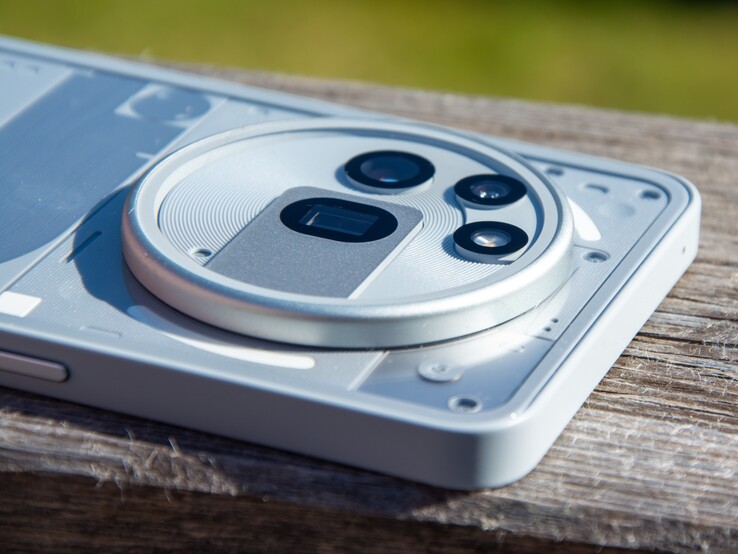






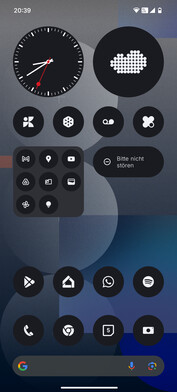

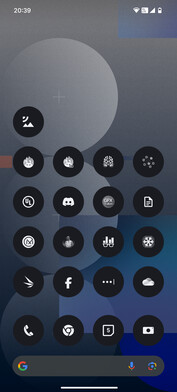
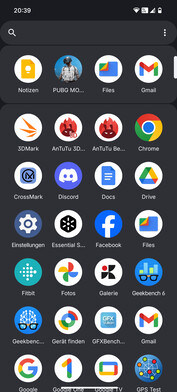




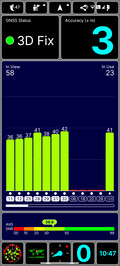





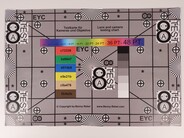



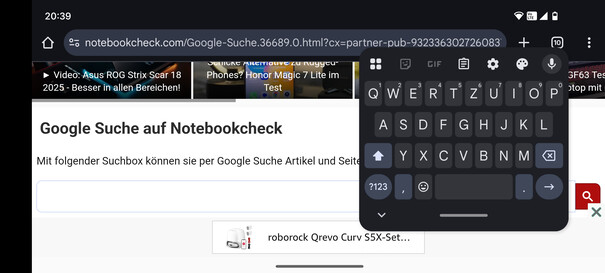

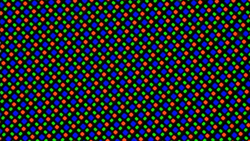










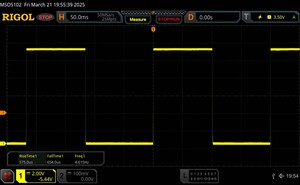
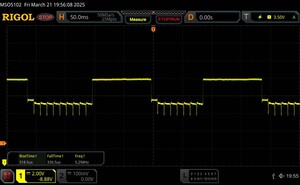


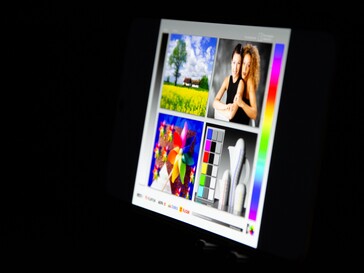

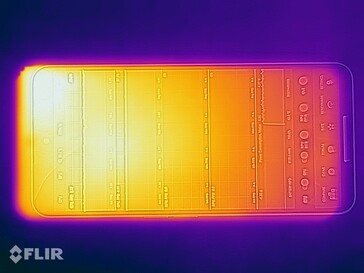
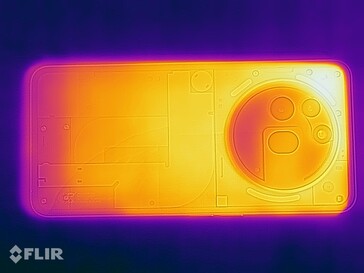
 Total Sustainability Score:
Total Sustainability Score: 
